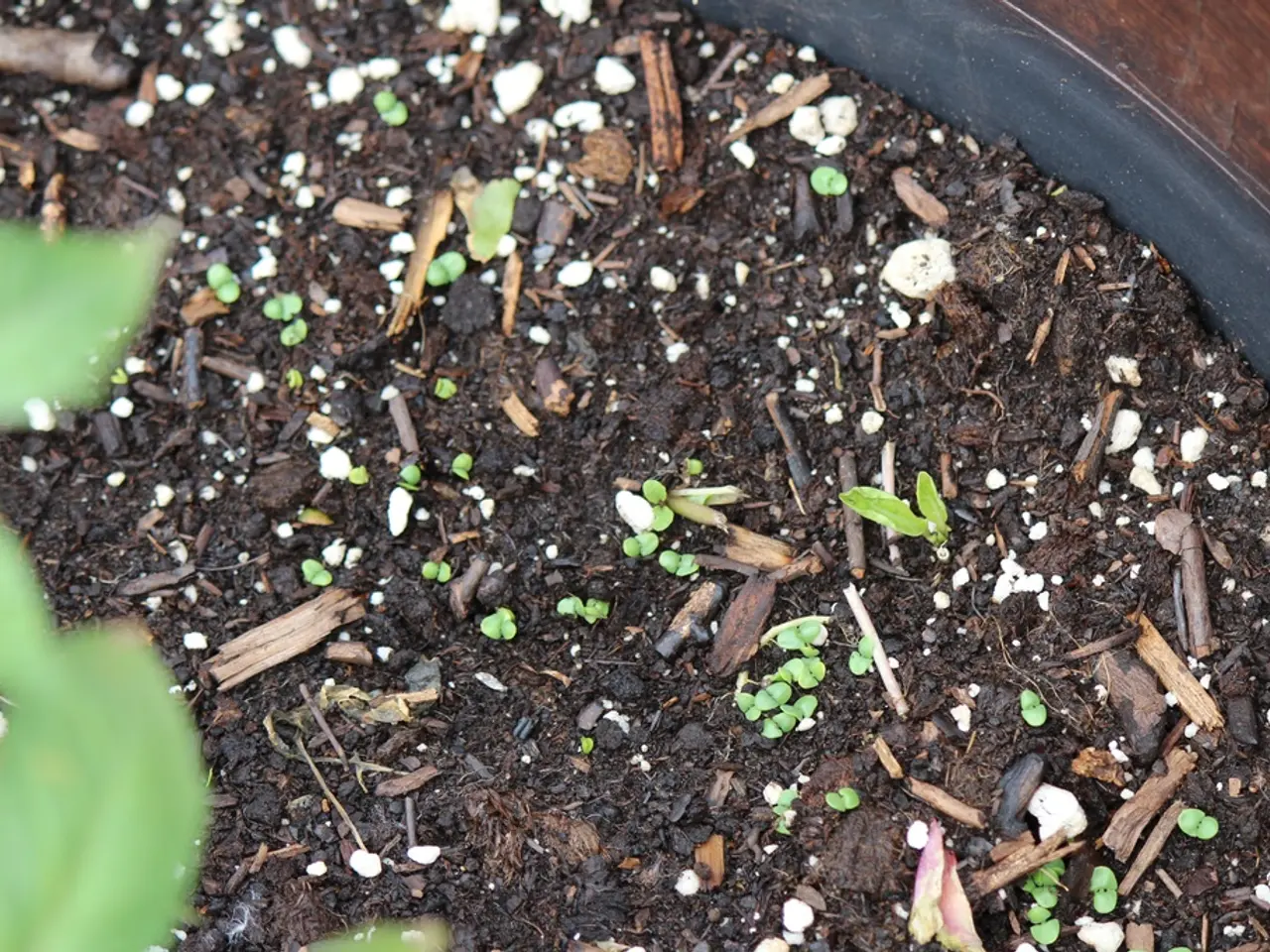Unseen Laborers: The Ones Responsible for Disintegrating Vegetation and Foliage
In the world of gardening, understanding the intricacies of soil is essential for growing a thriving garden. One type of soil that requires particular attention is clay soil. This news article will delve into the factors influencing decomposition and mineralization in clay soils, offering tips for gardeners to optimize their gardening practices.
Clay soils, with their small spaces between particles, are highly effective at retaining moisture and nutrients [1]. However, their compact nature can pose challenges, as it reduces the availability of oxygen for plant roots and microorganisms [2]. This balance between moisture retention and oxygen availability is crucial for the decomposition and mineralization processes in clay soils.
Decomposition and mineralization are biological processes that transform organic matter into nutrients usable by plants. Bacteria and fungi are the primary agents responsible for this transformation [3]. Bacteria are the first to attack new organic plant and animal residues, breaking them down into simpler substances [4]. Fungi, on the other hand, specialize in breaking down lignin, a complex component of plant matter [5].
The speed of decomposition and mineralization in soil is primarily influenced by a combination of environmental and soil-specific factors [6]. Key among these are climate (temperature and moisture), soil texture and pH, biological activity (microbial and organism presence), the chemical nature of the parent material, and time.
Temperature and moisture availability are critical because they control microbial metabolic rates and the chemical breakdown of organic material. Warm, moist conditions accelerate decomposition, while cold or dry conditions slow it down [6]. Soil texture affects aeration and water retention, influencing microbial habitats and activity. Fine-textured soils may retain more moisture but can limit oxygen diffusion, affecting decomposition [6]. Soil pH affects microbial community composition and function; some microbes prefer neutral to slightly acidic soils, influencing decomposition rates [2].
The presence and composition of soil microorganisms and soil fauna (e.g., bacteria, fungi, earthworms) drive the breakdown of organic matter. Changes in microbial populations due to factors like nutrient availability or intercropping can enhance or slow mineralization, as microbes mineralize organic matter to access nutrients such as nitrogen [2,4].
The chemical composition of the soil parent material affects soil fertility and the nutrient status, which in turn influences microbial activity and decomposition. Minerals in the parent material can facilitate or hinder organic matter breakdown [1].
Over time, the interaction of climate, biota, topography, and parent material shapes soil characteristics and decomposition dynamics. Soil maturity affects organic matter accumulation and turnover rates [1]. Practices such as intercropping can alter nutrient competition and soil microbial communities, thereby influencing mineralization rates and organic matter decomposition [4].
In the realm of gardening, it's essential to understand that a high C:N ratio in organic matter can lead to nitrogen deficiency in crops or plants in the short term [7]. To counteract this, gardeners can employ various strategies, such as the use of slow-release mineral fertilizers, green manure, cover crops, mulch, and liming agents if the soil's pH is acidic.
Moreover, soil organic carbon (SOC) sequestration is key to addressing challenges like food security, climate change, and environmental sustainability. SOC sequestration captures atmospheric carbon dioxide and improves soil health [8]. Detritivores, such as earthworms, recycle dead organic matter back into the ecosystem, contributing to SOC sequestration [9].
Improving clay soils for gardening requires a minimum tillage system, contouring, regular aeration, and various soil amendments. By consistently applying these improvement strategies, gardeners can grow a wide variety of plants in clay soils, including certain trees, shrubs, flowers, and vegetables with strong root systems [10].
In conclusion, decomposition and mineralization rates in soil are controlled by a complex interplay of climatic conditions (temperature, moisture, precipitation), soil physicochemical properties (texture, pH, parent material), biological factors (microbial communities and fauna), and temporal dynamics of soil formation and land use. Optimal temperature and moisture favour faster decomposition, while extremes and unfavourable soil conditions slow it down. By understanding these factors, gardeners can cultivate thriving gardens in clay soils.
Sources: [1] LibreTexts Biology, 2025-07-28, Soil formation factors and climate influence [2] PMC, 2025-08-04, Effects of soil texture, moisture, temperature and pH on microbial communities [4] PMC, 2025-07-20, Impact of intercropping on soil microbial mineralization [5] Nature Scientific Reports, 2025, Precipitation and temperature as primary drivers of decomposition [6] PMC, 2025-08-05, Factors influencing decomposition and mineralization in soil [7] PMC, 2025-07-30, C:N ratio and nitrogen availability in soil [8] PMC, 2025-08-01, Soil organic carbon sequestration and its importance [9] PMC, 2025-07-25, Earthworms and soil organic carbon dynamics [10] PMC, 2025-07-29, Gardening in clay soils: strategies for improvement
- The small spaces between particles in clay soil make it highly effective at retaining moisture and nutrients, but its compact nature can reduce the availability of oxygen for plant roots and microorganisms, potentially affecting decomposition and mineralization processes in the soil.
- To enhance decomposition and mineralization in soil, gardeners can consider factors such as optimal temperature and moisture, soil texture, pH, microbial activity, and the chemical nature of the parent material, all of which play crucial roles in these biological processes.
- Science, environmental science, data-and-cloud-computing, and technology, when combined with soil-improving practices like contouring, regular aeration, and soil amendments, can help gardeners optimize their gardening practices, particularly when dealing with challenging clay soils, contributing to climate-change mitigation through improved soil health and soil organic carbon sequestration.




